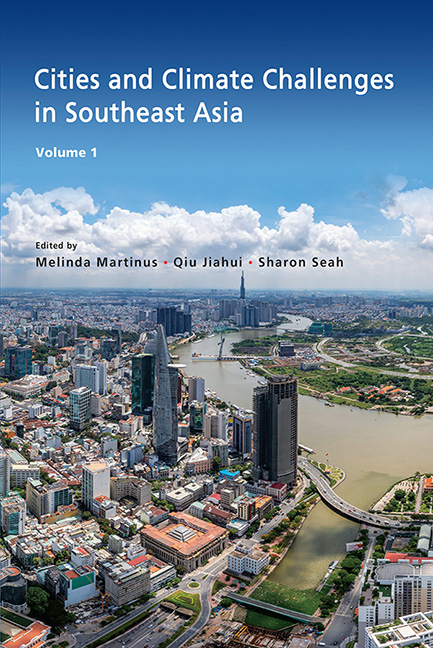5 - The Interplay Between Climate Risks and Ten Years of Urban Development in Ho Chi Minh City
Published online by Cambridge University Press: 09 January 2024
Summary
Summary:
■ Ho Chi Minh City is a prime example of urban climate risk, with one of the highest assessed levels of (future) risk of all coastal cities worldwide.
■ The city’s urban expansion into low-lying flood plains reduces flood detention and retention capacity, thus increasing flood risks.
■ Various climate risks to the city have been assessed in the past. However, previous assessments were often limited to purely future scenarios of climatic hazards and undertaken at a city-wide scale, neglecting the distinct finer, structural, and socio-economic heterogeneity that characterizes the city.
■ Traditional environmental protection approaches such as climate adaptation, disaster risk reduction, and flood governance need to be integrated in a local or more precise “block-scale” planning.
INTRODUCTION
Concern for climate change impacts to the cities and urban regions of Vietnam is rapidly increasing due to the compounding effects of natural hazards, climate change and strong urbanization. Unprecedented changes to its cities and regions have played a key role in the country’s economic growth, modernization and poverty reduction strategies. However, disasters and climate change increasingly challenge the sustainable development trajectory not only for the cities themselves, but also of the national and regional economic system.
The emerging megacity of Ho Chi Minh City (10°49´ N, 106°37` E), formerly known as Saigon and often abbreviated as HCMC, is characterized by rapid environmental and socio-economic transformations. As Vietnam’s largest city, HCMC suffers from frequent and chronic flooding. Flood events occur individually, but more commonly in combination with high tides and fluvial flow events. Tides along with overburdened or blocked drainage and sewage systems and channel encroachments exacerbate flood risk. The occurrence of localized urban flash and pluvial flooding, a condition where water not being able to enter the drainage system or ejected from the drainage system, following high intensity or prolonged heavy rainfall leading to overland flow and ponding, is a common occurrence on many of the city’s streets. While the city has a long tradition of living and coping with small floods and has built up a certain degree of resilience, events still cause injury, damage to property and infrastructure, as well as interruption of essential services and business supply chains.
- Type
- Chapter
- Information
- Cities and Climate Challenges in Southeast Asia , pp. 61 - 72Publisher: ISEAS–Yusof Ishak InstitutePrint publication year: 2023

